Philodendrons are known as low-effort plants that grow to be vibrant and beautiful. If you’re an owner of this wonderful greenery, you might come across their leaves curling, despite doing everything right. To combat this issue, knowing why it happens can be of help.
Why are philodendron leaves curling?
Philodendron leaves could curl due to a mix of issues. The main culprit being lack of water, temperature stress, or even nutritional deficiency could be a reason. Other reasons include insect infestation and wrong soil. Basically, curling means the plant’s facing inadequate growing conditions.

As an owner seeing your plant not thrive can be worrying. To make sure your beloved philodendron’s doing well, understanding what’s causing it leaves curling will be beneficial.
While leaves curling is a sign of an imperfect growing environment, it does not mean they are going to perish and there’s no coming back. As long as you work on giving them what they need, philodendrons will flourish yet again.
Water:
Both underwatering and overwatering can damage your plant and for the tropical philodendron, lack or too much water can make them curl and wilt. Somewhat related to water, humidity or lack of it can cause the leaves to curl too.
Nutrition:
If you think your Philo is getting enough water but it’s still acting up, it could be because it’s not getting enough nutrition from the soil. Nutrition deficiency can happen if there’s high pH in the soil or they can’t be absorbed effectively because the roots are damaged.
On the other hand, too much nutrition can be detrimental as well, meaning if you over-fertilize your soil, it could disorient your plant and cause the roots to shrivel. In both cases, this could result in the leaves curling and wilting.
Temperature:
Philodendrons being tropical plants mean they are very temperature reliant. They can’t flourish in the cold and will likely perish.
However, this doesn’t ensure they will do very well in high temperatures either. While they are very adaptable to most home temperatures, very high heat will cause them to lose more water which will predictably make them wilt and curl.
Insects and diseases:
If food and water are okay, it could mean unfortunate insect infestations. While they are generally not prone to get insects on them, some kinds like Aphids and Thrips suck the juice away from the leaves which make them curl.
If it’s a disease there’s no need to worry, they are mostly curable. Powdery mildew is a fungus that causes the leaves to curl upwards and leave a white powdery layer behind.
Sunlight:
If your houseplant’s exposed to too much light, the leaves can turn yellow, curl or even become scorched. Yes, being tropical plants help them, but even philodendrons have their limits. Too much sunlight will make them curl, trying to reduce the exposure.
Too little sunlight makes them become sad and droop, causing the leaves to grow closer and become stunted.
What does it mean when a philodendron leaves curl?
If your philodendron leaves are curling frequently, it means it’s not getting enough water, nutrients, or sunbeams.
More times than not, leaves curling is a sign that something is wrong, let it be dry soil, absence of humidity, cooler than ideal temperature, or creepy crawling insects that are harming your adored potted plant.
Note that if you plan to reintroduce water to your underwater Philodendron, do it intermittently, so the plant can get used to water again and won’t be overwhelmed by the dramatic change of the environment.
What causes these philodendron species leaves to curl and how to fix them?
Water, nutrients, sunlight are the common factors to curl leaves of a Philodendron. Let’s take a look at some of these popular Philodendrons –
Philodendron Birkin:
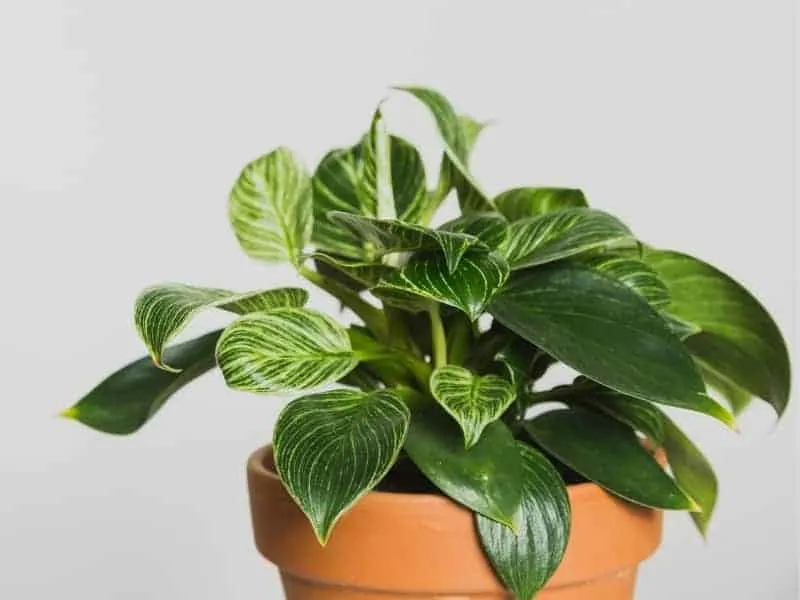
Philodendron Birkins are stunning to look at, so having them not be full in bloom can be quite a bummer.
The leaves of this species can curl if they are under or overwatered, or if they are in temperatures colder than what they are used to, or in places that are less humid than preferred.
To counter this, pick the right room for them to be in, water them in adequate amounts and invest in a humidifier if your budget allows you to.
Heart-leaf Philodendron / Philodendron Brasil:
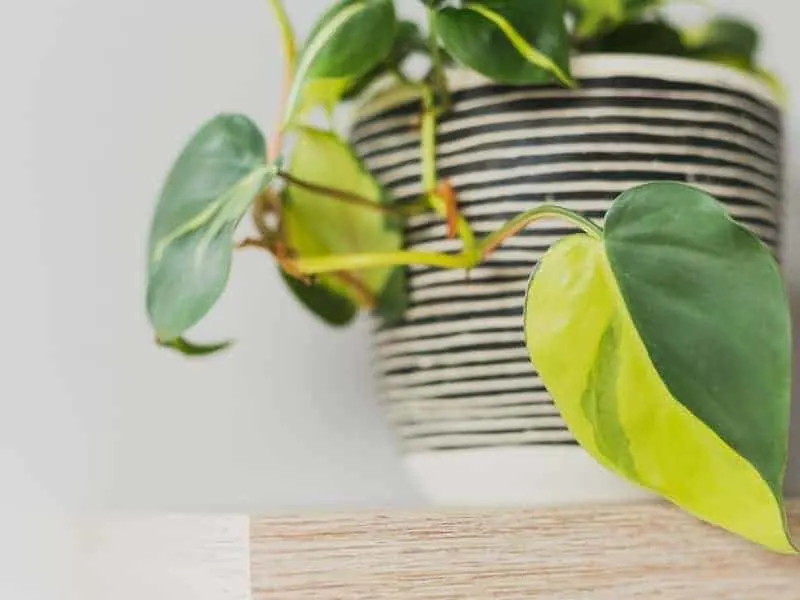
This colorful philodendron has a close resemblance to the Brazilian flag with its green and yellow colorings, hence the name. Since it belongs to the philodendron family, if their leaves are curling up it could be the same reasons why too.
Whenever they are in less-than-optimal conditions, they can start to brown and curl. See if they are getting enough water and if the room or space they are in is too hot or cold.
Silver Philodendron:
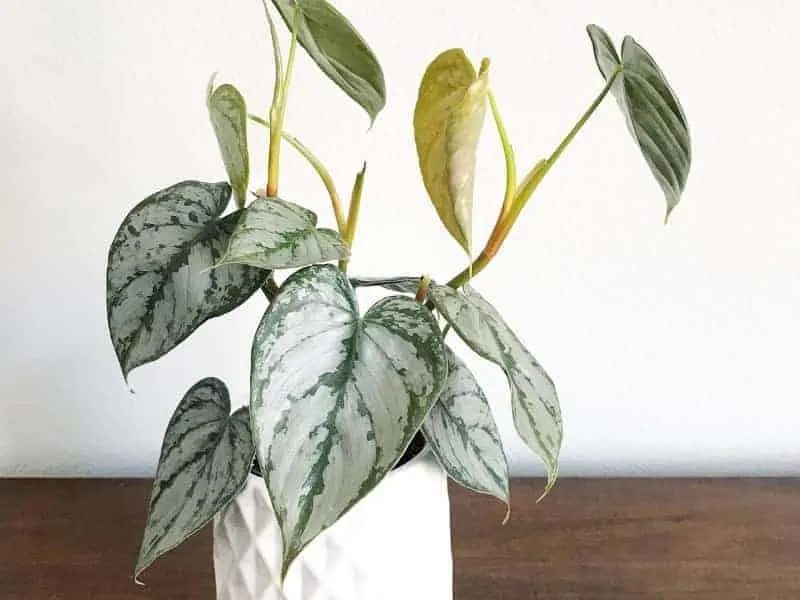
This gorgeous plant can face curling due to two main reasons, cold temperature, and under-watering.
If it’s the cold, shift them to a sunnier, warmer room that has enough humidity as well. And as mentioned earlier, reintroduce water in steps to rehydrate them back to glorious health. Dry soil could be another reason, fix the potting mix if that’s the case.
Split-leaf Philodendron:
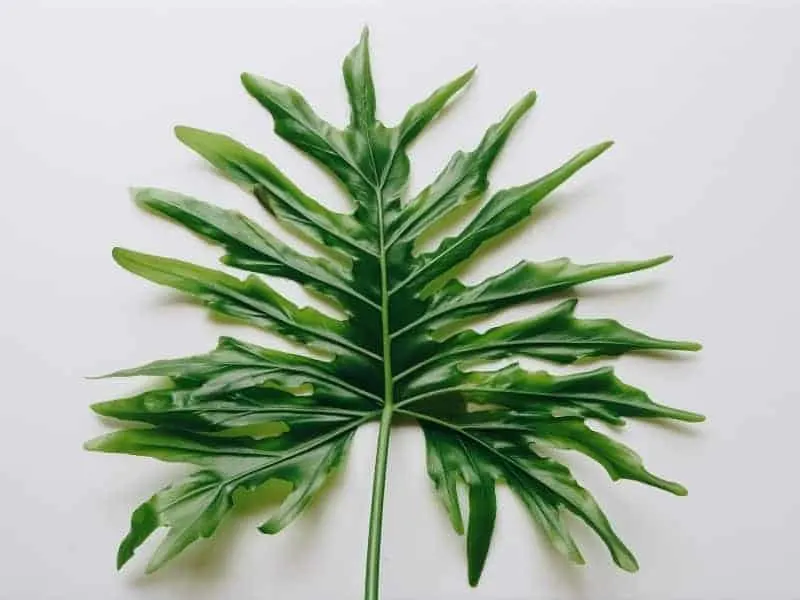
Almost always mistaken as Monsteras, this tropical philodendron can have its leaves curl up for the same reasons mentioned above. You already know how to combat the usual causes such as underwatering and lack of humidity, so let’s talk about something a bit more nuanced.
If you overfeed your Philo with fertilizer, it can damage your plant and make them curl downwards and even start to brown. Always use fertilizer periodically and within limits.
Pink Princess Philodendron:
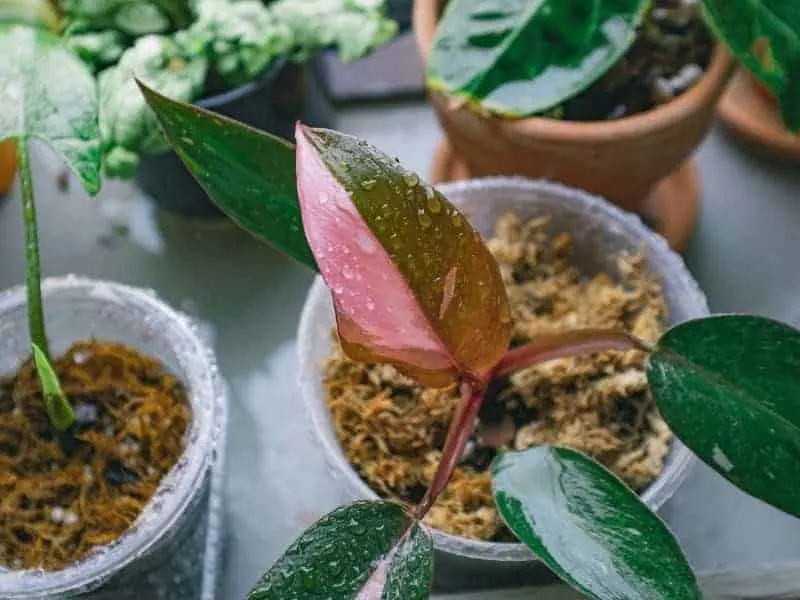
For your pretty pink princess philodendron to unfurl and live their best lives, you have to make sure they are getting watered properly. To ensure this, water them thoroughly until they can escape the drainage hole. Rewater when the top inch or two has dried out and done it again.
Other than this, avoid overwatering, keep them in good light and when going for repotting, go for one size up. Going for something way bigger can have the soil taking too long to dry out compared to the size of the plant.
Prince of Orange Philodendron:
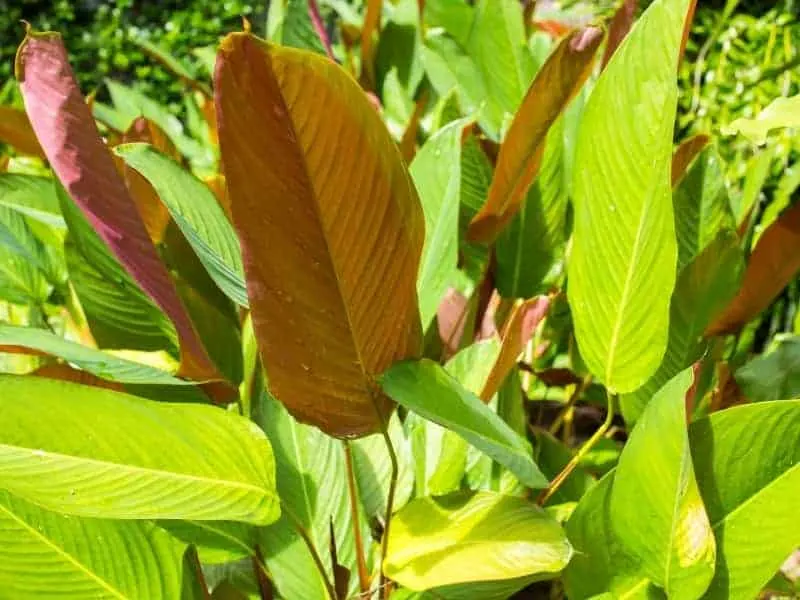
This royal species of Philodendron is one of the lighter feeders of its category. This means it needs little fertilizer and over-fertilizing will make it act up as the pink princess. Try going for a water-soluble fertilizer that’s good for houseplants.
You can also go for organic equivalents that are 5-5-5- or less. This is achievable by diluting the fertilizer.
Silver Satin Philodendron:
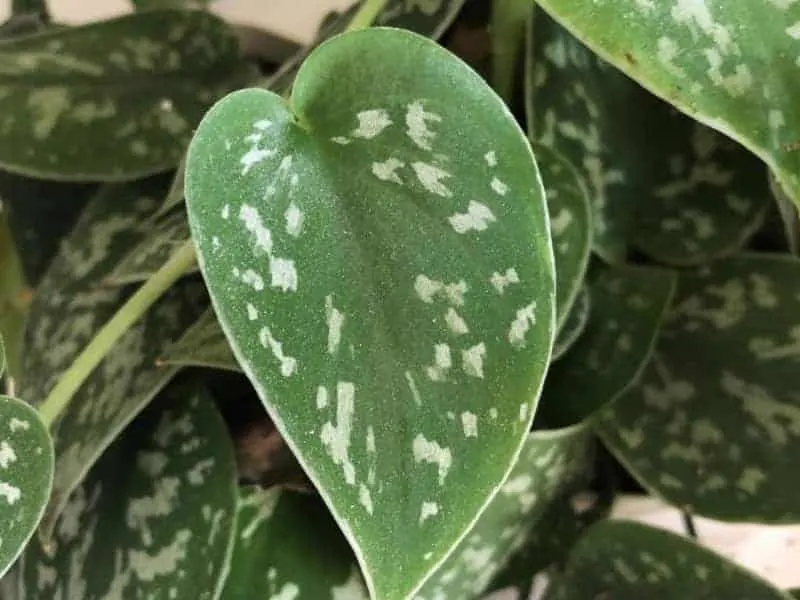
If growth is stunted or stuck with this wonderful houseplant, it could be because it’s not receiving enough sunlight. If you think it’s exposed to enough sun and humidity, the remaining cause is water. Too little water can make them stunted and shrivel up.
Philodendron Micans:

Philodendron Micans can start to curl up if they are overwatered, which will cause their root to become damaged. A damaged root can begin to rot, this means it can’t take nutrients from the soil, which would make them weaker over time.
Starved of vital nutrients, the leaves can turn soft and begin to curl. The only way to combat this is to catch signs of overwatering early on and reducing it.
Philodendron Selloum:
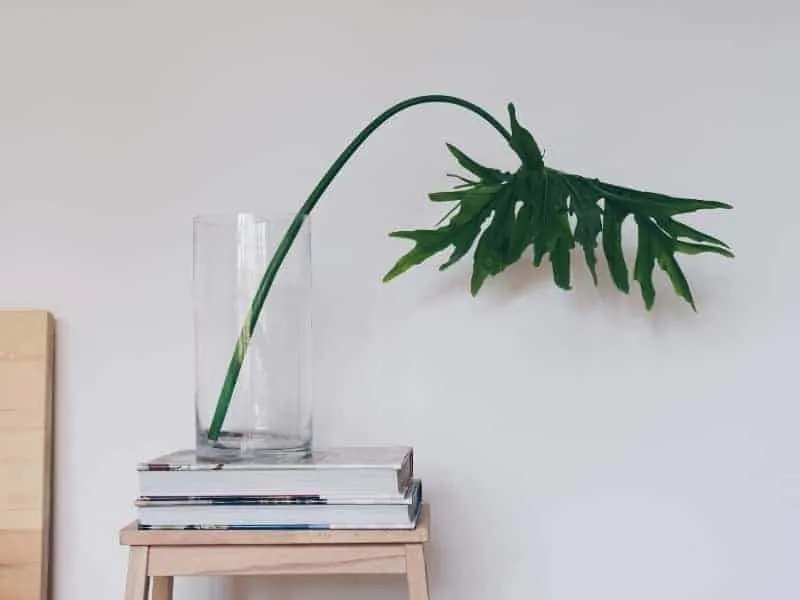
Just like any other plant, overwatering or underwatering is the root cause of most of their problems. As philodendrons prefer soil that’s kept consistently yet slightly moist, changing this setting can cause them to become lifeless and tight.
Make sure to stay on your watering routine, changing when the weather or situation demands it.
Philodendron Congo:
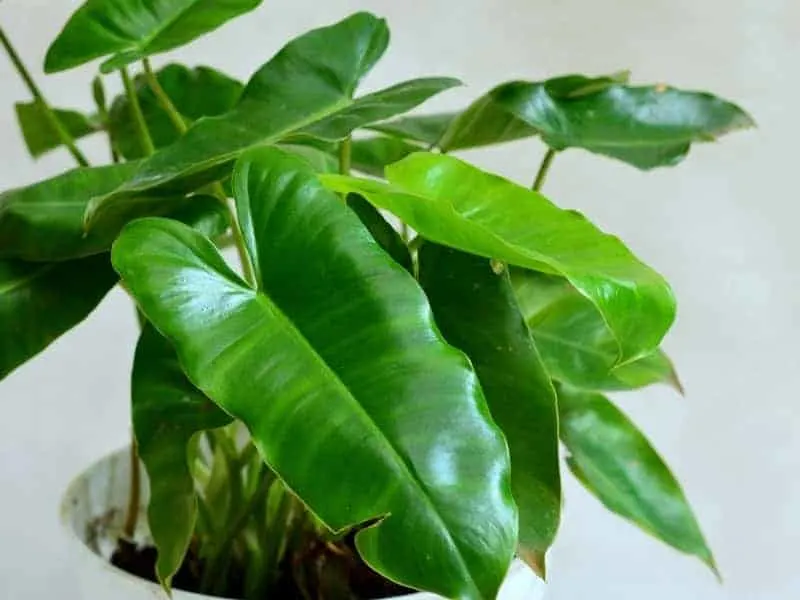
Too much or too little sunlight could cause this majestic philodendron species’ leaves to curl up. If it’s curling inwards, it is exposed to too much sunlight.
Contrastingly, curling upwards means it’s trying to increase the amount of sunlight it’s getting, implying they aren’t getting enough light to grow healthy and happy.
Philodendron Silver Sword:
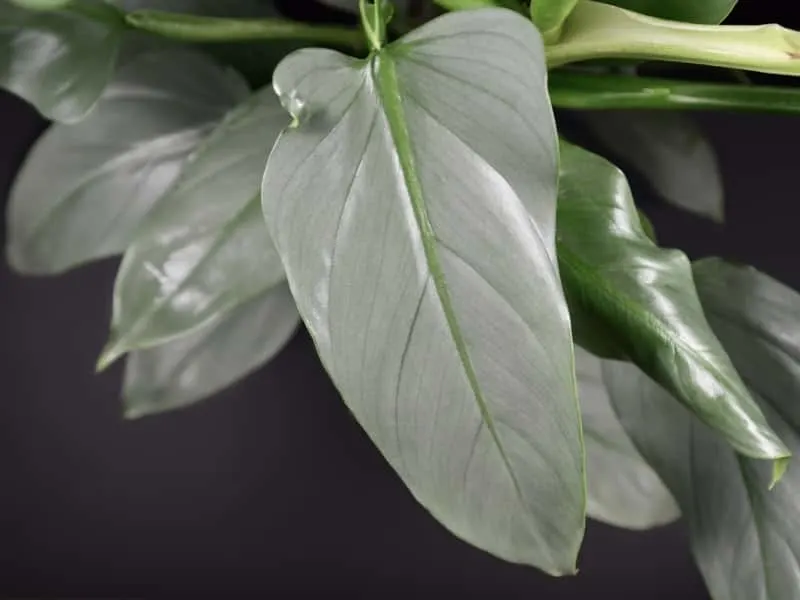
If your precious silver sword is looking soft and the leaves are curling up, it could be the usual water problem. It could also be the soil and its improper mixture. These plants don’t like soggy soil, so it has to be the correct ratio so it can retain its moisture.
Check the moisture level of the soil before watering it, keep it appropriately fertilized, and keep the soil a healthy mixture of potting soil, planting soil, and perlite.
Why won’t my philodendron leave unfurl?
As mentioned earlier, if the conditions above aren’t meant, philodendrons will have their leaves curled tightly and refusing to unfurl.
Insufficient humidity can cause them to get stuck since the lack of moisture can be detrimental. Increase the humidity by misting them every other day, they need 50- 75% of humidity to live free and vibrantly.
Philodendrons are a vibrant plant that enhances the lively feel of any space it’s in. Looking after this low-maintenance green friend properly will have you rewarded with shiny, healthy, and full leaves with a strong core that supports it proudly.
Frequently Asked Questions:
Do Philodendron Like to Be Root Bound?
Do Philodendrons Bloom Flowers? How Often Do They Bloom?
Why are Philodendron Leaves Small?
